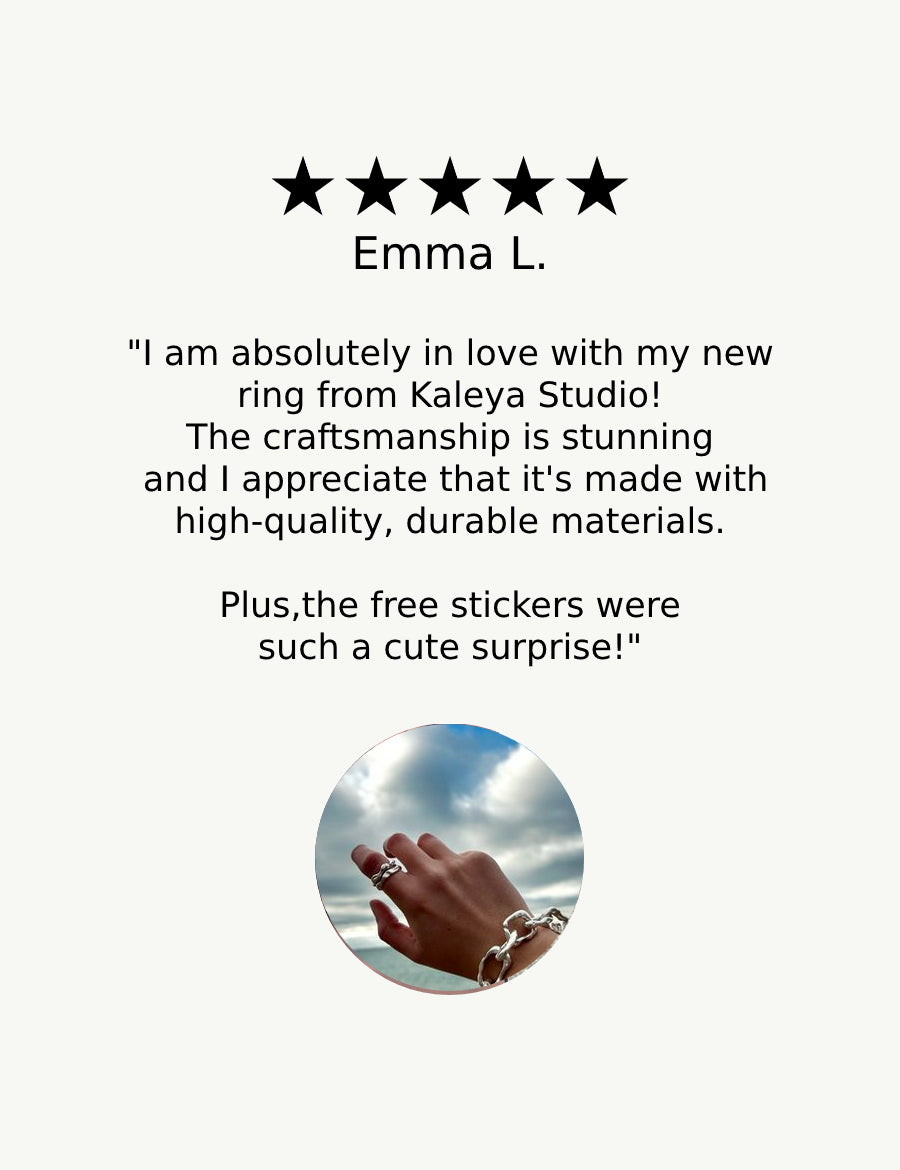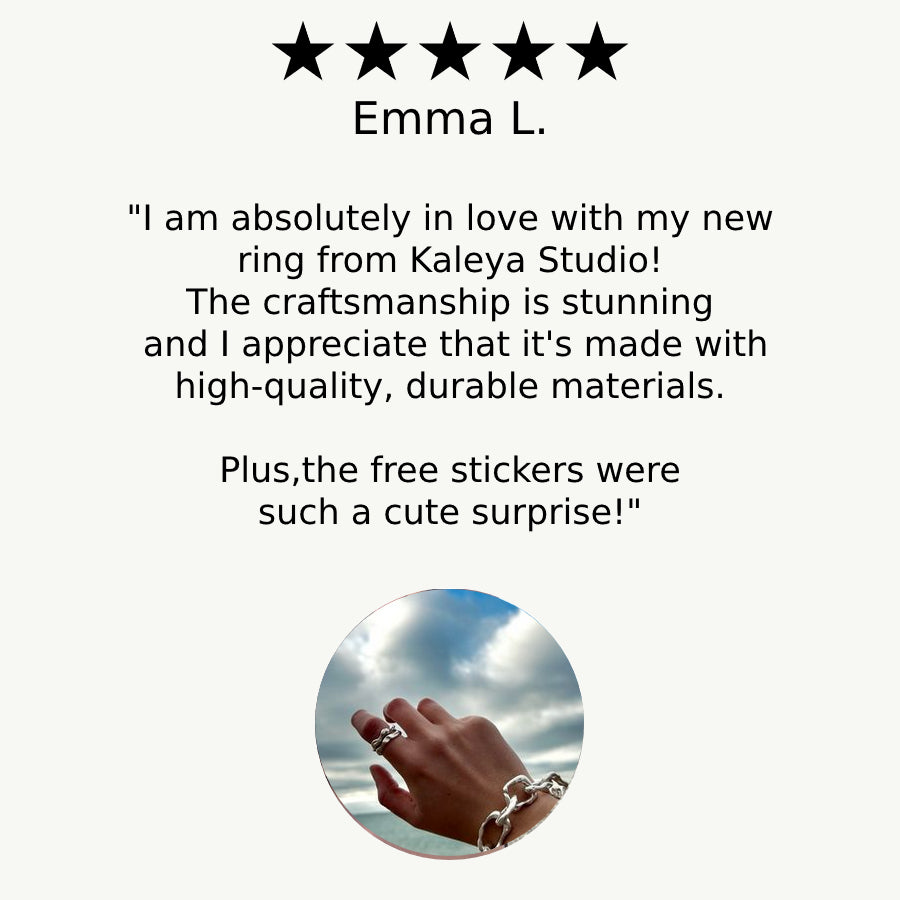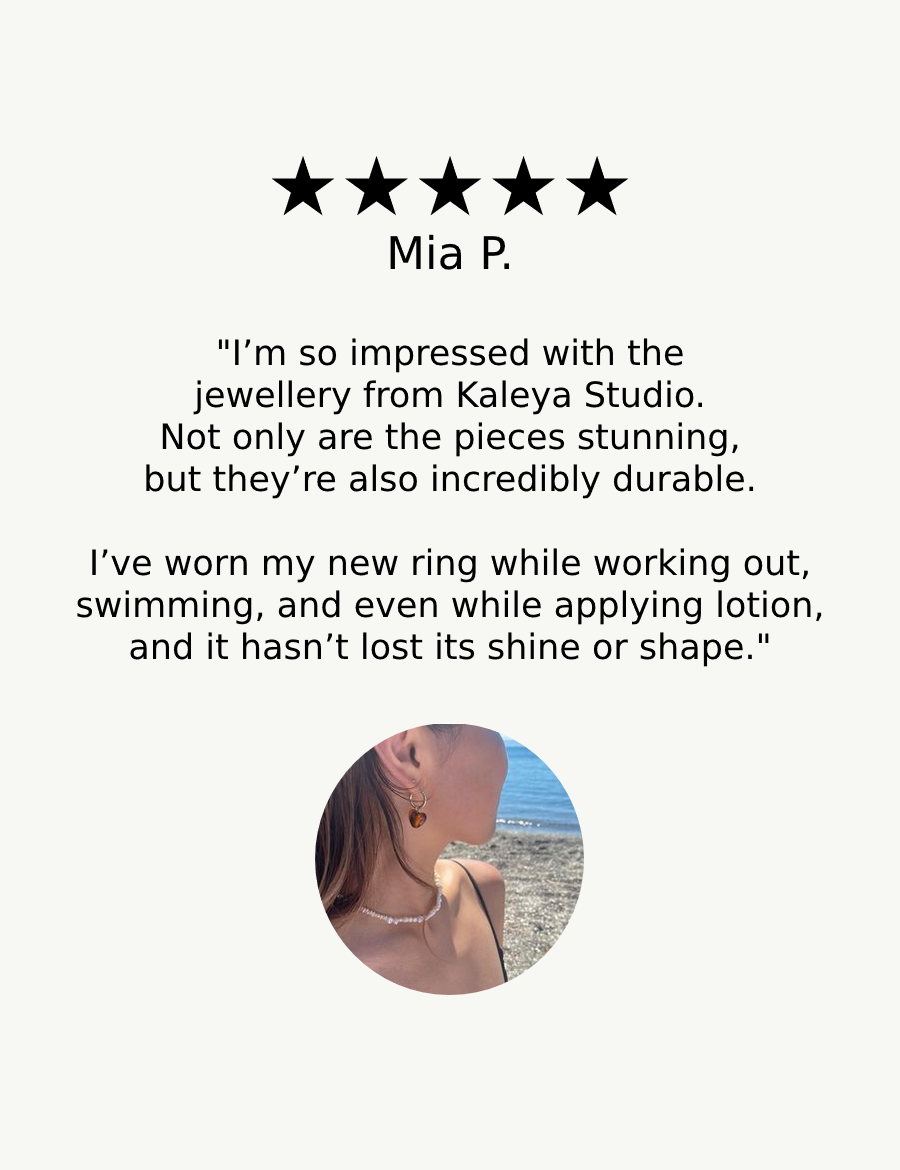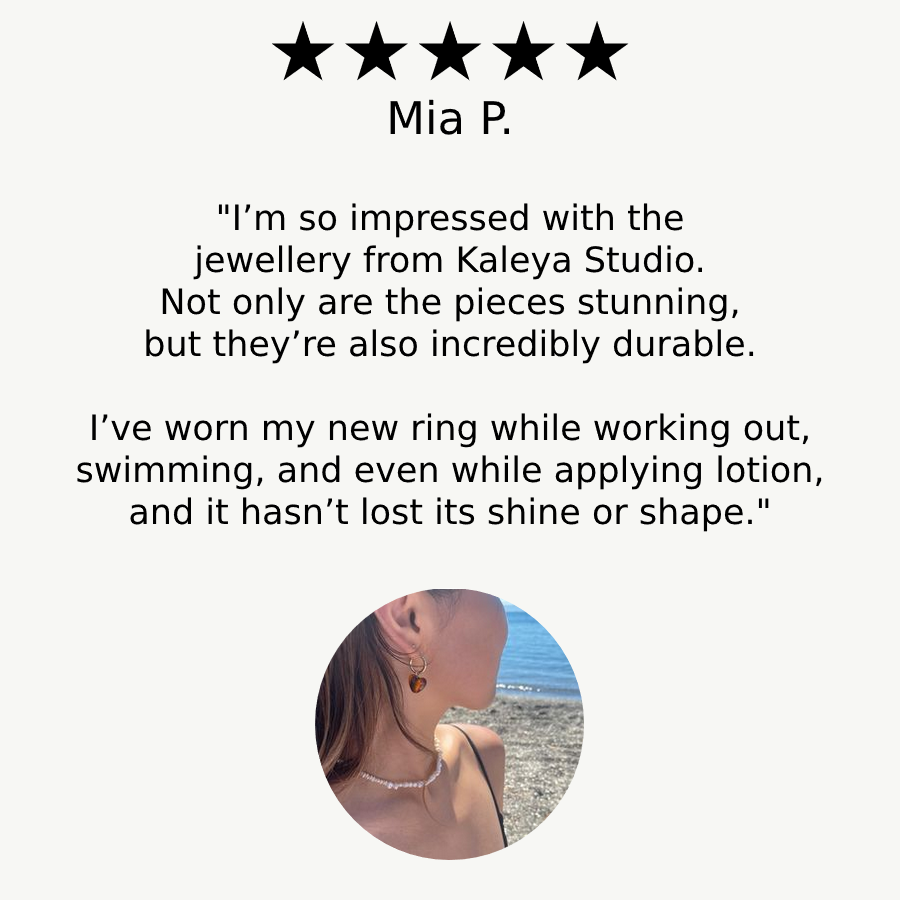How to Measure Your Ring Size UK: The Ultimate Guide
Finding the perfect ring is exciting, whether it's a symbol of commitment, a fashion statement, or a cherished gift. But the excitement can quickly fade if the ring doesn't fit properly, hindering both comfort and style. An ill-fitting ring can be uncomfortable, insecure (imagine it slipping off!), or require costly and time-consuming resizing. This is especially true when buying rings online, where trying before you buy isn't an option.
Getting your ring size right is crucial, and if you're buying in the UK market, you'll need to know your UK ring size. Unlike the numerical systems used in the US or Europe, the UK uses a letter-based system, typically ranging from A (the smallest) up to Z+ for larger sizes, and importantly, often including half sizes for a more precise fit.
Don't worry if you're unsure of your size! This ultimate guide will walk you through everything you need to know about how to measure your ring size UK accurately. We'll cover several easy methods you can try at home, provide essential tips for precision, share a helpful UK ring size chart, and explain why sometimes, visiting a professional is the best bet for guaranteed accuracy.
Why Accurate Ring Sizing is Crucial
Taking a few moments to measure your ring size correctly can save you a lot of trouble down the line. Here's why it matters so much:
- Comfort: A ring should feel comfortable enough to wear daily (if intended). Too tight, and it can restrict circulation or be difficult to remove. Too loose, and it will constantly spin or slide around, which can be annoying and increase the risk of damage.
- Security: This is paramount, especially for valuable engagement rings, wedding bands, or heirloom pieces. A ring that's too large is at constant risk of slipping off your finger unnoticed, potentially leading to heartbreaking loss.
- Cost & Hassle: Resizing a ring isn't always straightforward or cheap. Some materials (like tungsten or titanium) and intricate designs (like full eternity bands with stones all around) can be difficult or impossible to resize. Even when possible, resizing involves costs, time without your ring, and potentially affects the ring's integrity. Getting it right the first time avoids this common frustration.
- Gift Giving: If you're buying a ring as a surprise gift, knowing the recipient's correct UK size makes the moment truly perfect. While resizing might be an option later, presenting a ring that fits straight away is always more special.
- Online Shopping Confidence: When buying rings online, you don't have the chance to try them on first. Accurate self-measurement gives you the confidence to order the correct size and minimises the chance of needing to deal with returns or exchanges.

A perfect fit is essential for comfort and security
4 Methods to Measure Your Ring Size at Home (UK System)
While visiting a jeweller is the gold standard for accuracy (more on that later), several reliable methods can give you a good estimate of your UK ring size from home. Let's explore them.
Method 1: The String or Paper Strip Technique
This is one of the most common DIY methods, requiring basic household items.
What you'll need:
- A thin strip of paper (about 1cm wide and 10cm long) OR a piece of non-stretchy string (like dental floss or thin ribbon). Avoid anything elasticated, as this will give an incorrect measurement.
- A pen or fine-tip marker.
- A ruler with millimetre (mm) markings.

Step-by-step instructions:
- Take the paper strip or string and wrap it snugly around the base of the finger you intend to wear the ring on. It should be snug, but not uncomfortably tight – try to mimic how a well-fitting ring feels.
- Ensure the paper/string sits where the ring band would naturally rest, below the knuckle.
- Using your pen, carefully mark the precise point where the end of the paper/string overlaps to form a complete circle. If using string, you can mark both ends where they meet or carefully cut the string at the meeting point.
- Unwrap the paper/string and lay it perfectly flat against your ruler.
- Measure the length in millimetres (mm) from the start of the paper/string to the mark you made. This measurement is the circumference of your finger.
- Refer to the UK Ring Size Chart below (using the 'Internal Circumference' column) to convert your measurement into your corresponding UK letter size.
Tips for this method:
- No stretching! Ensure the string or paper doesn't stretch at all as you wrap or measure it. Accuracy is key.
- Consider the knuckle: If your knuckle is significantly larger than the base of your finger, measure both areas. Choose a size that will fit comfortably over the knuckle without being excessively loose at the base. You might need a size slightly larger than the base measurement indicates.
- Measure multiple times: This is crucial for reliability. Repeat the process 3-4 times, ideally on different days or times, to ensure consistency and average the results if they differ slightly.
- Check snugness: It should be tight enough not to slip off easily but loose enough to slide over your knuckle with a little effort.
Method 2: Using an Existing Ring That Fits
This method is excellent if you already own a ring that fits the intended finger perfectly.
What you'll need:
- A ring that fits the correct finger well.
- A ruler with millimetre (mm) markings OR, for much better accuracy, a digital caliper.

Step-by-step instructions:
- Place the well-fitting ring on a flat, stable surface.
- Using your ruler or caliper, carefully measure the internal diameter of the ring. This means measuring the distance straight across the centre of the ring hole, from one inner edge to the opposite inner edge. Crucially, do not include the metal band itself in the measurement.
- Ensure you are measuring the widest possible internal distance across the exact centre.
- Record the measurement in millimetres (mm).
- Use this internal diameter measurement (in mm) to find your corresponding UK letter size on the UK Ring Size Chart below (using the 'Internal Diameter' column).
Tips for this method:
- Correct finger is key: Make absolutely sure the ring you're measuring is worn comfortably on the same finger you plan to wear the new ring on. Finger sizes can vary significantly, even between the same finger on opposite hands.
- Precision matters: Measuring the diameter requires accuracy. Being off by even half a millimetre can shift the resulting size. A digital caliper provides the most precise reading if available.
- Round rings only: This method works best for perfectly round rings. If the ring is bent, oval-shaped, or misshapen, the measurement will likely be inaccurate.
Method 3: Using a Printable Ring Sizer (UK)
Many jewellers and websites offer downloadable ring sizer tools. These usually feature either a sizing strip to cut out and wrap around your finger or a sheet with circles onto which you place an existing ring.

Instructions:
- Search online for a "printable UK ring sizer" from a reputable source (major jewellers often provide reliable ones).
- Download the PDF file.
- *** CRITICAL STEP FOR ACCURACY ***: Before printing, you MUST ensure your printer settings are configured to print at 100% scale or "Actual Size." DO NOT use settings like "Fit to Page," "Scale to Fit," or any other percentage. Check the print preview and settings dialogue box carefully. Printing at the wrong scale will make the sizer completely inaccurate.
- Verify the scale: After printing, use a ruler to check the sizing guide or reference measurement usually included on the printout (e.g., a line that should measure exactly 50mm or 2 inches). If this reference measurement is incorrect, your print scale is wrong – do not use the sizer and try printing again with the correct settings.
- Once you've verified the scale, carefully follow the instructions on the printed sheet:
- If it's a cut-out strip, wrap it around your finger (as per Method 1) and read the indicated size.
- If it's a chart of circles, place your existing (well-fitting) ring over the circles until you find the one where the inside edge of your ring perfectly aligns with the outside edge of the printed circle. The size labelled for that circle is your estimated size.
Tips for this method:
- Double-check the scale: We can't stress this enough! An incorrect print scale is the most common pitfall with this method.
- Use stiff paper: Printing on thicker paper or thin cardstock can make the cut-out sizer easier and more accurate to handle.
Method 4: Ordering a Plastic Ring Sizer Tool
For a small investment, you can get a reusable plastic ring sizer, often available from online retailers like Amazon, Etsy, or sometimes directly from jewellers' websites. These typically resemble a small belt or zip tie with marked UK letter sizes.
- How they work: You simply wrap the sizer around your finger, feed the end through the buckle, and adjust it until it feels like a comfortable ring fit – snug enough not to fall off, but loose enough to slide over the knuckle. You then read the size indicated by the arrow or mark on the sizer.
- Benefit: Many people find these tools more accurate and easier to use than paper or string. They are reusable and helpful for checking sizes for different fingers or family members in the future.
The Most Reliable Method: Visit a Professional Jeweller
While the home methods can provide a good estimate, nothing surpasses the accuracy of getting your finger professionally sized by a jeweller. This method eliminates all guesswork.
- Expertise & Calibrated Tools: Jewellers use precise, calibrated tools specifically designed for measuring ring size. These include a set of metal rings in standard UK sizes (a ring gauge) and a tapered measuring stick (a mandrel) for checking the size of existing rings. Their experience allows them to factor in nuances like knuckle size and the effect of ring width for the best possible fit recommendation.
- Unmatched Accuracy: This is unequivocally the most accurate way to determine your true ring size, minimising the risk of errors inherent in DIY methods.
- Often Free & No Obligation: Most high street jewellers offer ring sizing as a complimentary service. They hope you might consider purchasing from them, but there's usually no obligation.
- When it's Highly Recommended: We strongly advise professional sizing if:
- You are purchasing an expensive or sentimentally valuable ring (like an engagement ring, wedding band, or eternity ring).
- The ring design is difficult or impossible to resize (e.g., full eternity bands, certain metals like tungsten/titanium/ceramic, rings with intricate patterns wrapping all the way around).
- You have consistently obtained conflicting results from different home methods.
- You have noticeably large knuckles, tapered fingers, or other unique finger shapes where finding the right fit might be tricky.
Simply visit a local jewellery shop and ask for assistance measuring your ring size. It's a quick process that provides invaluable peace of mind.
UK Ring Size Chart (Letters, Diameter & Circumference)
Once you have your measurement in millimetres (either circumference from Method 1/3 or diameter from Method 2/3), use this chart to find your approximate UK ring size. Remember that UK sizes often come in half-sizes (e.g., L½) for a better fit, and slight variations can exist between different manufacturers. This chart provides a standard guide.
| UK Ring Size | Internal Diameter (mm) | Internal Circumference (mm) | Approx. US/Canada Size | Approx. EU Size |
|---|---|---|---|---|
| H | 14.65 | 46.02 | 4 | 46 ½ |
| H½ | 14.86 | 46.68 | 4 ¼ | 47 |
| I | 15.04 | 47.25 | 4 ½ | 47 ½ |
| J | 15.27 | 47.97 | 4 ¾ | 48 ¼ |
| J½ | 15.40 | 48.38 | 5 | 48 ¾ |
| K | 15.70 | 49.32 | 5 ¼ | 49 ½ |
| K½ | 15.80 | 49.64 | 5 ½ | 50 |
| L | 16.10 | 50.58 | 5 ¾ | 50 ¾ |
| L½ | 16.30 | 51.21 | 6 | 51 ¼ |
| M | 16.51 | 51.87 | 6 ¼ | 52 |
| M½ | 16.71 | 52.50 | 6 ½ | 52 ½ |
| N | 16.92 | 53.16 | 6 ¾ | 53 ¼ |
| N½ | 17.12 | 53.79 | 7 | 53 ¾ |
| O | 17.35 | 54.51 | 7 ¼ | 54 ½ |
| O½ | 17.55 | 55.14 | 7 ½ | 55 ¼ |
| P | 17.75 | 55.76 | 7 ¾ | 55 ¾ |
| P½ | 17.97 | 56.45 | 8 | 56 ½ |
| Q | 18.19 | 57.15 | 8 ¼ | 57 |
| Q½ | 18.39 | 57.78 | 8 ½ | 57 ¾ |
| R | 18.61 | 58.47 | 8 ¾ | 58 ¼ |
| R½ | 18.80 | 59.06 | 9 | 59 |
Chart Disclaimer: This includes common sizes and approximate conversions. Sizes continue smaller (A-G) and larger (S-Z+). Always confirm with the specific retailer if possible, as slight variations can occur.
How to Use: Find your measurement in the 'Internal Diameter (mm)' or 'Internal Circumference (mm)' column. Read across to the 'UK Ring Size' column to find the closest corresponding letter size. If your measurement falls between two sizes, consider the tips below.
Top Tips for Getting an Accurate Ring Size Measurement
Achieving an accurate measurement at home requires attention to detail. Keep these essential tips in mind:







